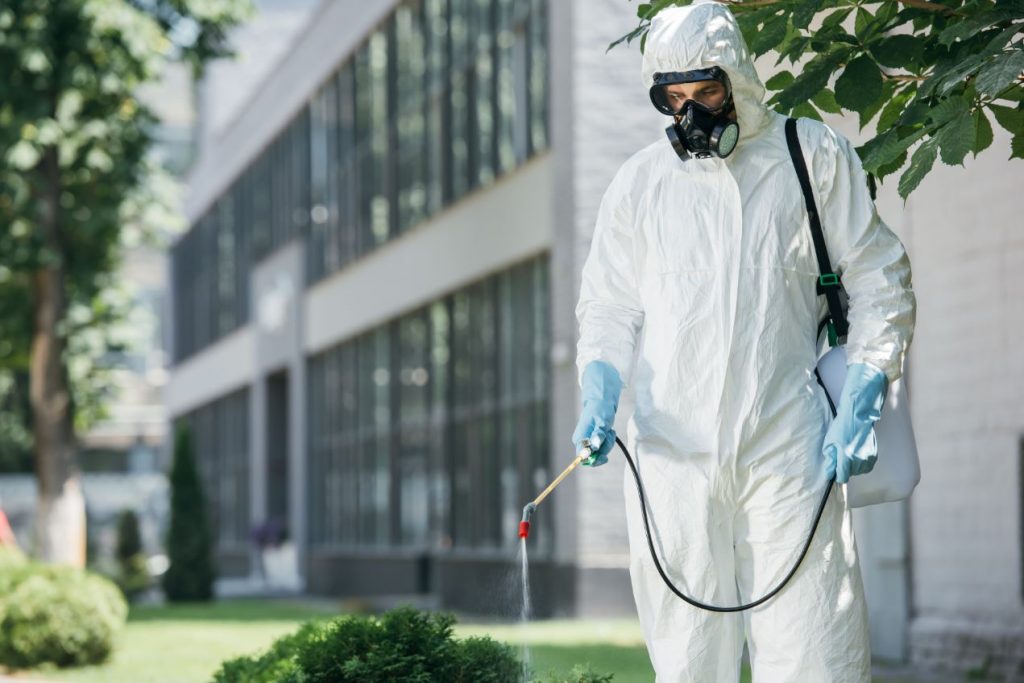In this post, Sebastian Stehle informs about their recent paper “Aquatic pesticide exposure in the U.S. as a result of non-agricultural uses“.
In the U.S., pesticides are commonly applied in non-agricultural settings to maintain residential and commercial landscaping/turf, prevent structural damage to buildings, eradicate disease vectors, and maintaining open spaces in utility and road right-of-ways. After application, pesticides may be transported to urban waterways, with stormwater runoff identified as one of the major transport pathways due to little or no retention on impervious surfaces typical for urban landscapes. However, compared with agricultural pesticide uses, little is known regarding the exposure levels and risks for surface water ecosystems resulting from non-agricultural pesticide applications.

In order to address this research gap, we conducted a literature review and meta-analysis of peer-reviewed studies to identify measured environmental concentrations (MEC) of pesticides in perennial surface water bodies due to non-agricultural uses in the U.S. We assessed the overall risks by comparing water-phase concentrations (MECSW) to acute and chronic aquatic life benchmarks (ALBacute, ALBchronic) and sediment concentrations (MECSED) to regulatory threshold levels (RTLSED); these risks were also assessed individually for the different pesticide types, i.e., herbicides, fungicides and insecticides. We additionally compared particularly for insecticides the risks from urban insecticide uses for U.S. surface waters to those derived previously for agricultural insecticide uses in the U.S. (data taken from Wolfram et al. 2018, see this post).
We overall retrieved 10,755 MECs for a multitude of pesticide compounds (approx. 150) from in total 70 scientific studies, with pesticide concentrations measured at 609 urban surface water sites across the U.S. In the water phase, particularly herbicides and insecticides were most frequently detected, whereas insecticides dominated detections in sediments. Concerning the risk assessment results, overall acute (5.6% ALBacute exceedances; n = 9034 MECSW) and chronic (9.3% ALBchronic exceedances; n = 9036 MECSW) risks were comparably low in the water phase, while 35% of sediment concentrations (n = 1621 MECSED) exceeded RTLSED. This finding indicates high risk for benthic organisms in urban streams.
An analysis of risks for the different pesticide types shows that insecticides (26.3% ALBchronic exceedances; 41.8% RTLSED exceedances) and particularly pyrethroids (79.7% ALBchronic exceedances; 89.9% RTLSED exceedances) were identified as the main drivers of benchmark exceedances in both the water phase and sediments. The high toxicity of modern insecticides and particularly pyrethroids for aquatic invertebrates, as well as their increasing uses in urban settings are reasons for our findings. However, fungicides and herbicides exceeded respective threshold levels in the water phase and sediments in less than 2% of the cases, indicating low risks of these compounds for urban waterways in the U.S.
The comparison of large-scale risks from urban (present study) and agricultural (Wolfram et al., 2018, see this post) insecticide uses in the U.S. indicates an overall significantly higher risk for agricultural (54.7% threshold level exceedance; n = 4601 MECs) compared with urban surface waters (29% threshold level exceedance; n = 3605 MECs). Our synoptic study provides here new insights, since many small-scale studies reported by now higher insecticide levels and threshold levels exceedances in urban than in agricultural surface waters in the U.S. In the water phase, differences were even higher with 18.1% threshold level exceedances in urban and 55% threshold level exceedances in agricultural surface waters, respectively.
More targeted insecticide sampling in agricultural studies, closer proximities of pesticide applications and surface waters in agricultural settings, as well as smaller surface waters in agricultural compared to urban areas are potential explanations for lower overall threshold level exceedances in urban compared with those derived for agricultural surface waters. However, substantially higher risks were identified for sediments of urban (81.9% RTLSED exceedances) compared with agricultural (54.2% RTLSED exceedances) waterbodies. Frequent detection of highly toxic pyrethroids and associated RTLSED exceedances in urban surface waters may serve as an explanation. Overall, these results indicate from an ecotoxicological perspective that insecticides in sediments of urban surface waters are of more concern than in agricultural surface waters.
The extent of developed areas including cities are increasing in the U.S., which puts freshwater ecosystems in these areas under increasing pressure resulting from physical stream habitat alterations, changes in hydrology and pollution. The present meta-analysis highlights widespread exposure of urban waterbodies towards a multitude of pesticides and particularly high threshold level exceedances in sediments. These threshold level exceedances of pesticides in urban surface waters warrant the necessity for risk management measures such as outright bans of problematic pesticides or detention basins to retain urban stormwater runoff.
In conclusion, the results of our study show that current pesticide exposure of urban streams in the U.S. may – in concert with additional stressors – contribute to degradation and biodiversity losses of these aquatic ecosystems.
The article was authored by Sebastian Stehle, Abigail Bline, Sascha Bub, Lara Luisa Petschick, Jakob Wolfram, and Ralf Schulz and published in Environment International.
